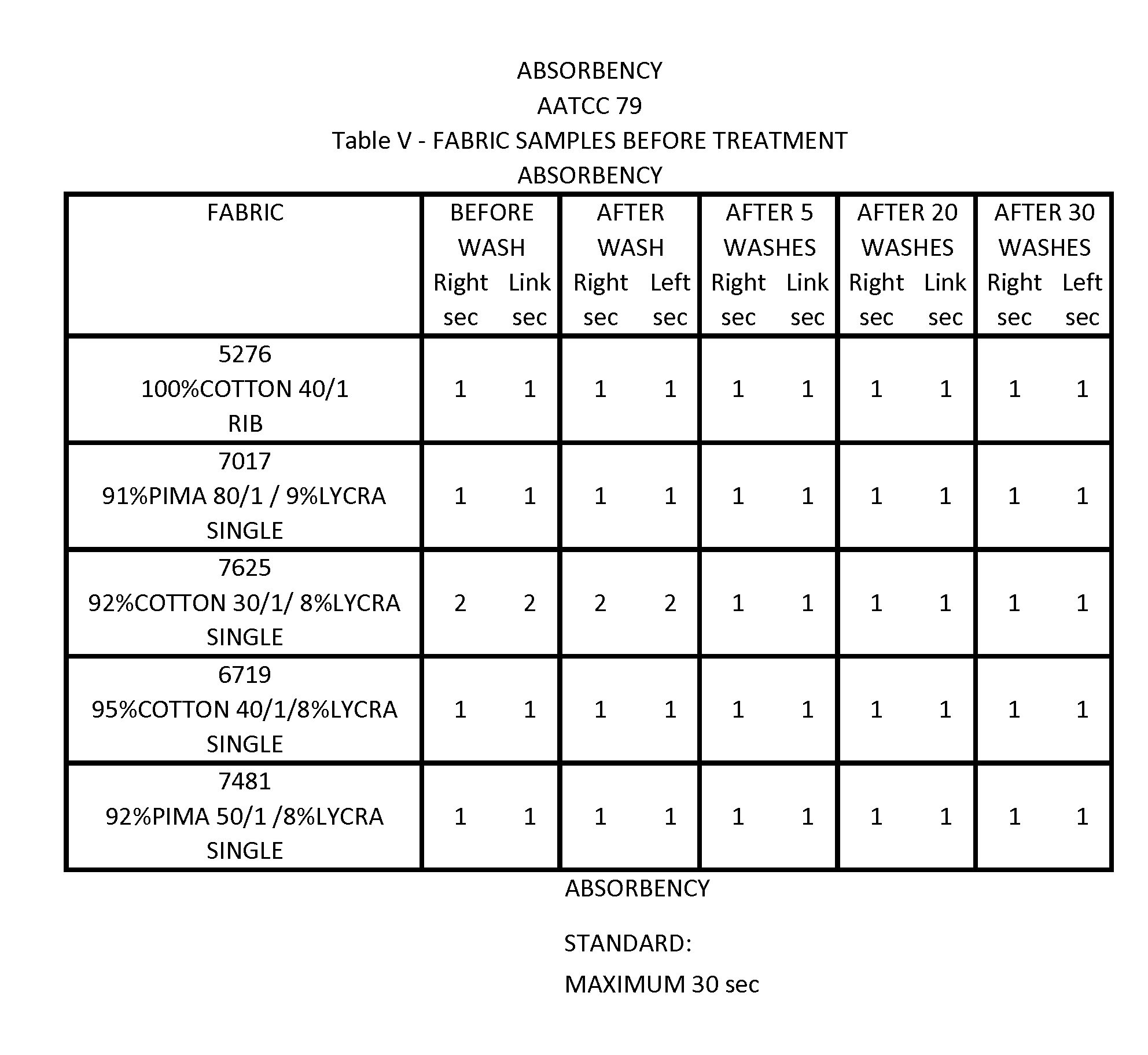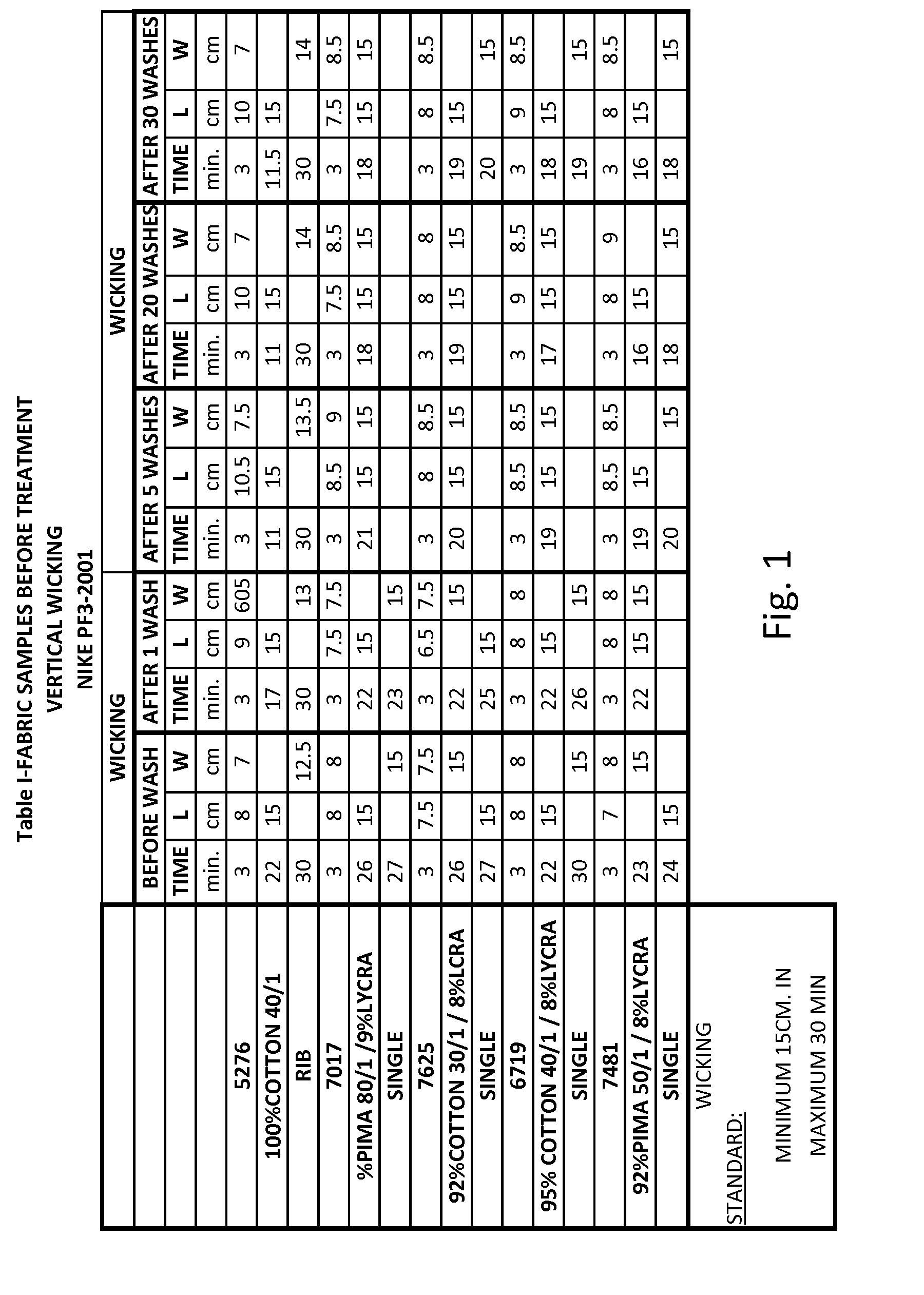Moisture-management in hydrophilic fibers
a technology of hydrophilic fibers and moisture, applied in knitting, weaving, transportation and packaging, etc., can solve the problems of affecting the comfort of wearers, etc., and achieve the effects of improving moisture management performance, and improving moisture management performan
- Summary
- Abstract
- Description
- Claims
- Application Information
AI Technical Summary
Benefits of technology
Problems solved by technology
Method used
Image
Examples
Embodiment Construction
AND TEST RESULTS
[0039]Wicking tests of untreated and treated cotton fabrics have been conducted under two standard test methods, i.e., Drop Test, and Vertical Wicking, the latter being according to both M&S (Marks and Spencer) and Nike standard test.
[0040]The results, presented in the following Tables, refer either to time-dependent advance of moisture in the capillary channels of a cotton fabric, in accordance with the Vertical Wicking test method, or to time-dependent area coverage advance of the moisture in the fabric, measured close to starting and advanced time points, in accordance with the test method of Drop Test. The Drop Test also includes percentage measurements of moisture evaporation at a pre-determined time-point.
[0041]In both tests, the fabrics were further tested for sustaining wicking performance level after repeated washes. It should be mentioned in this regard, that although it is common practice to test fabrics up to between 10 and 20 wash rounds, the tests of th...
PUM
| Property | Measurement | Unit |
|---|---|---|
| distance | aaaaa | aaaaa |
| hydrophilic | aaaaa | aaaaa |
| circular shape | aaaaa | aaaaa |
Abstract
Description
Claims
Application Information
 Login to View More
Login to View More - R&D
- Intellectual Property
- Life Sciences
- Materials
- Tech Scout
- Unparalleled Data Quality
- Higher Quality Content
- 60% Fewer Hallucinations
Browse by: Latest US Patents, China's latest patents, Technical Efficacy Thesaurus, Application Domain, Technology Topic, Popular Technical Reports.
© 2025 PatSnap. All rights reserved.Legal|Privacy policy|Modern Slavery Act Transparency Statement|Sitemap|About US| Contact US: help@patsnap.com



